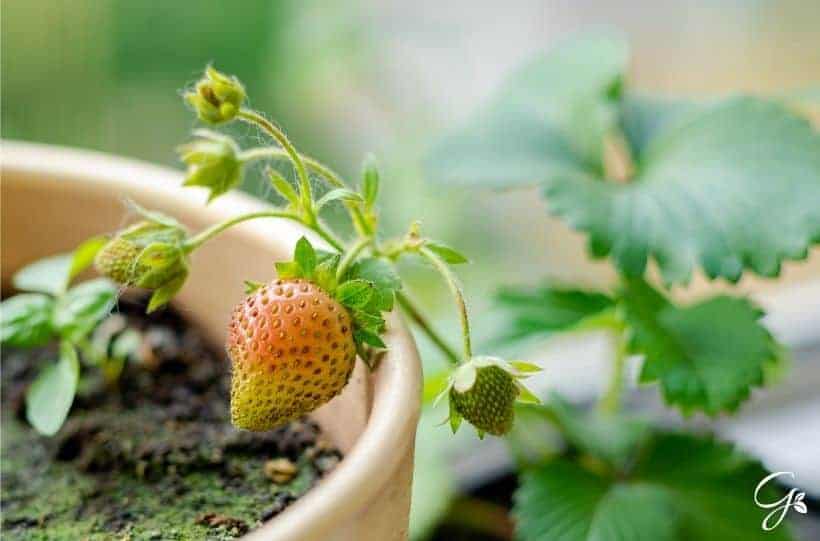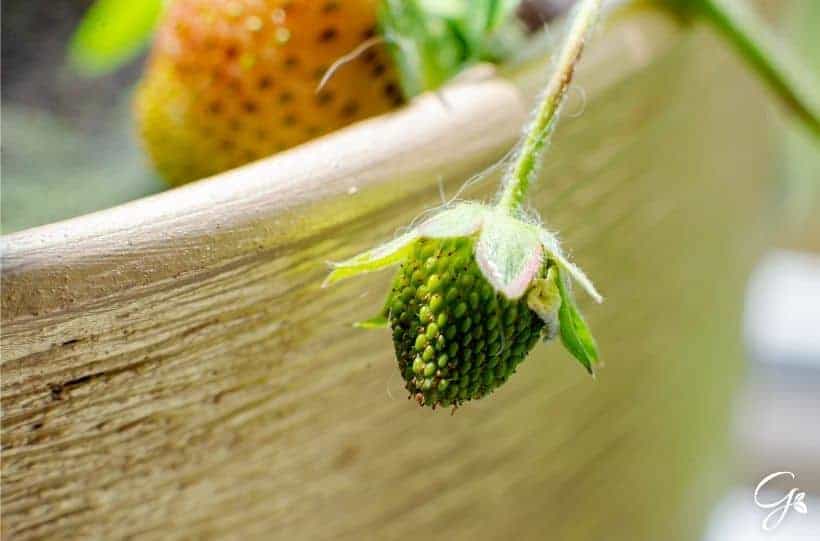How To Grow Strawberries Indoors From Seeds
This post may contain affiliate links. Please see the privacy policy for details.
Strawberries are a firm favorite fruit that everyone enjoys all year round. However, producing your own strawberries throughout the year can be a challenge, especially if you experience cold weather.
Growing your strawberries indoors instead could overcome this seasonal problem and help you achieve a strawberry harvest no matter the weather conditions outdoors.
Being one of the easiest fruits to grow, strawberries are ideal for beginner gardeners through to those more experienced.
In a few quick and simple steps, you will have your very own delicious strawberries growing indoors. Keep reading to learn how to grow strawberries indoors from seeds.

How to Grow Strawberries Indoors From Seeds
1. Choosing a Variety of Strawbery
Before you begin growing strawberries indoors, you need to consider what variety of strawberries you want to grow. Some varieties only produce fruit in June, whereas other varieties, known as ever-bearing, will produce fruit at least twice per year.
Another factor to take into account is the space your strawberry plants will need. Many varieties will spread widely, whereas some clump together which are great for growing in smaller spaces.
For growing indoors, alpine strawberries are considered one of the best varieties to select.
They are more compact, perfect for smaller spaces, and produce fruit throughout the growing season between June and October. They are easy to plant, aren’t too fussy in terms of access to light and soil.
However, as with all strawberry varieties, access to direct sunlight and high-quality soil provide ideal growing conditions.
2. Growing Requirements
Once you have selected the best strawberry variety for your home, it is time to prepare what strawberries need.
As with most plants, strawberries need:
- Light
Strawberry plants prefer access to direct sunlight and require approximately 6 hours a day, depending upon the variety. If direct sunlight isn’t possible indoors, you can use artificial LED plant lights.
You would need to double the amount of time your indoor strawberry plants have access to artificial light. For example, if your strawberries need 4 hours of direct sunlight, they will need 8 hours of LED plant light every day.
- Soil
As strawberry plants, especially the alpine variety, do not have deep roots, you don’t need a deep pot with lots of soil. However, the soil you do use needs to be high-quality, organic, and well-drained. Potting soil is ideal to grow strawberries indoors as it isn’t heavy or thick like mud so helps to moisten your strawberries, support their roots, and help drain excess water.
- Fertilizer
Organic fertilizer is extremely beneficial for growing your strawberries indoors. It is best applied to your strawberry container around once every month to help provide nutrients to your plants.
3. Planting Strawberries
When planting strawberries from seeds, it is recommended to freeze the seeds first for 4 weeks. Once removed, your strawberry seeds are “tricked” into thinking the seasons have changed from winter to spring. After planting, they will then begin setting their roots and growing as they would seasonally.
Make sure to allow your frozen seeds time to thaw before planting. The seeds are very delicate and small, so care is needed to add them to your soil.
As they are so small, it is best to plant them on top of your soil and add a small layer of soil on the top. Using a spray bottle, carefully spray your pots to provide your newly planted strawberries with water.
Your containers then need positioning either in a place that receives 6+ hours of direct sunlight each day. Or in an area where you have enough space to set up your LED plant lights.
It is also important to select a space in your home that does not experience drafts or a drastic change in temperature e.g. above a radiator or near a door opening to the outside.
After your seeds are established and settled, your strawberry plants will only require general maintenance such as adding fertilizer and watering. After around 5-6 months, you will be able to harvest your strawberries.
4. General Maintenance
As you grow strawberry plants indoors, they won’t be naturally pollinated by bees and butterflies. This is an important step that the flowers need to produce fruit.
Instead, once each flower grows, you will need to hand-pollinate them. You can use a cotton swab to gently brush the pollen from one flower and add it to another. Continue to do this until every flower has been pollinated.
Your strawberry plants also require any runners trimming. This will not only help save space but also ensure that your plants focus their energy on producing more flowers and fruit, instead of new shoots.
Finally, remember to continue watering and fertilizing your strawberry plants regularly. Try to avoid getting the leaves wet and focus on adding moisture to the base of your strawberry plants so they can be accessed by the roots.
Check the soil first to see if it is moist. If so, leave your strawberry plants a further few days before watering. Strawberries need watering regularly but do not grow well in waterlogged soil.

Questions Asked for Growing Strawberries Indoors
How long does it take a strawberry plant to produce fruit?
If you are growing strawberries from seeds, it can take 5-6 months before your plants will produce any fruit. However, if you have purchased small strawberry plants from your local garden center, then it could be as soon as 5-6 weeks.
How much light do strawberries need indoors?
This answer can vary depending upon the strawberry variety you choose to grow indoors. However, on average, strawberries need 6 hours of direct sunlight every day or, 12 hours of artificial LED plant light.
How do you pollinate strawberries indoors?
As your plants do not have access to pollinators outside, you need to hand pollinate them. You can use a cotton swab or rub the center of two flowers together to gently pollinate them.
Here are some more top tips for you to successfully grow strawberries:
